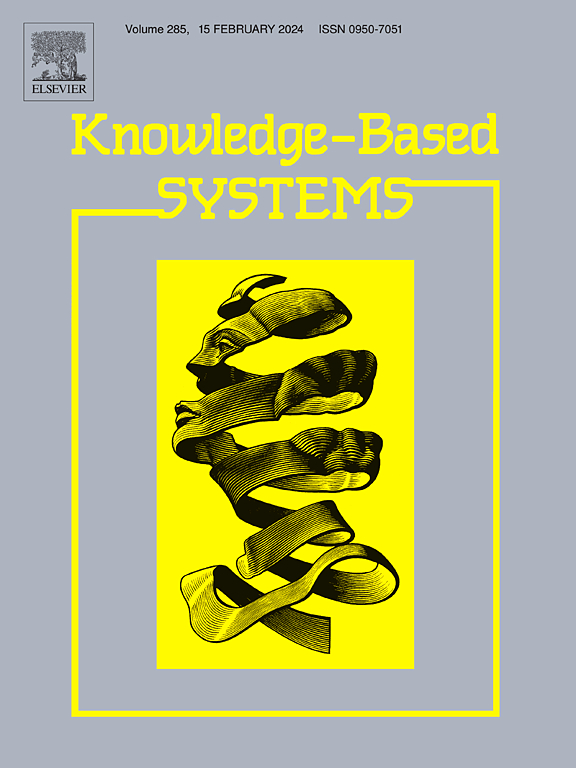DRN-DSA: A hybrid deep learning network model for precipitation nowcasting using time series data
IF 7.2
1区 计算机科学
Q1 COMPUTER SCIENCE, ARTIFICIAL INTELLIGENCE
引用次数: 0
Abstract
Precipitation nowcasting involves short-term weather forecasting, predicting rain or snow within the next two hours. By analyzing current atmospheric conditions, it aids meteorologists in identifying weather patterns and preparing for severe events such as flooding. These nowcasts are typically displayed on geographical maps by weather services. However, the rapidly changing climate conditions make precipitation nowcasting a formidable challenge, as accurate short-term forecasts are hindered by immediate weather fluctuations. Traditional nowcasting methods, like numerical models and radar extrapolation, have limitations in delivering highly detailed and timely precipitation nowcasts. To overcome this issue, an effective solution is framed for precipitation nowcasting using a hybrid network approach named Deep Residual Network-Deep Stacked Autoencoder (DRN-DSA). Initially, the input time series data is acquired from the dataset. Thereafter, the effective technical indicators are extracted at the feature extraction stage. Later on, precipitation-type nowcasting is carried out using the proposed hybrid DRN-DSA, which is developed by incorporating a Deep Stacked Autoencoder (DSA) and Deep Residual Network (DRN). Finally, Weather nowcasting is carried out using the same proposed hybrid DSA-DRN. Moreover, when compared to other traditional models, the proposed DRN-DSA has gained superior results with a Relative Absolute Error (RAE) of 0.295, Root Mean Square Error (RMSE) of 0.154, low Mean Square Error (MSE) of 0.0236, Mean Absolute Percentage Error (MAPE) of 0.295, and False Acceptance Rate (FAR) of 0.0118.
DRN-DSA:利用时间序列数据进行降水预报的混合深度学习网络模型
降水预报涉及短期天气预报,预测未来两小时内的雨雪天气。通过分析当前的大气条件,它可以帮助气象学家确定天气模式,并为洪水等严重事件做好准备。气象服务机构通常会在地理地图上显示这些即时预报。然而,瞬息万变的气候条件使降水预报成为一项艰巨的挑战,因为准确的短期预报会受到即时天气波动的影响。传统的降水预报方法,如数值模式和雷达推断,在提供高度详细和及时的降水预报方面存在局限性。为了克服这一问题,我们利用一种名为 "深度残差网络-深度叠加自动编码器(DRN-DSA)"的混合网络方法,为降水预报提出了一个有效的解决方案。首先,从数据集中获取输入时间序列数据。然后,在特征提取阶段提取有效的技术指标。随后,使用所提出的混合 DRN-DSA 进行降水类型预报,该方法是通过结合深度堆叠自动编码器(DSA)和深度残差网络(DRN)而开发的。最后,使用相同的混合 DSA-DRN 进行天气预报。此外,与其他传统模型相比,所提出的 DRN-DSA 获得了优异的结果,其相对绝对误差 (RAE) 为 0.295,均方根误差 (RMSE) 为 0.154,均方误差 (MSE) 为 0.0236,平均绝对百分比误差 (MAPE) 为 0.295,错误接受率 (FAR) 为 0.0118。
本文章由计算机程序翻译,如有差异,请以英文原文为准。
求助全文
约1分钟内获得全文
求助全文
来源期刊

Knowledge-Based Systems
工程技术-计算机:人工智能
CiteScore
14.80
自引率
12.50%
发文量
1245
审稿时长
7.8 months
期刊介绍:
Knowledge-Based Systems, an international and interdisciplinary journal in artificial intelligence, publishes original, innovative, and creative research results in the field. It focuses on knowledge-based and other artificial intelligence techniques-based systems. The journal aims to support human prediction and decision-making through data science and computation techniques, provide a balanced coverage of theory and practical study, and encourage the development and implementation of knowledge-based intelligence models, methods, systems, and software tools. Applications in business, government, education, engineering, and healthcare are emphasized.
 求助内容:
求助内容: 应助结果提醒方式:
应助结果提醒方式:


